One of the greatest things about the Sony F55 is that I can shoot S-Log2 inexpensively. One of the worst things about it is that I can’t see what I’m doing. Here’s how I worked around that.
In my last two articles I spoke about shooting this music video for the band Wampire using a Sony F55 and beta firmware that allowed us to record up to 120fps internally and up to 240fps to a raw deck. I’ll get to that in a bit, but first I want to talk about how I shot S-Log2 without really seeing what I was doing.
If you haven’t seen the video yet, take a look at it now (and be sure to read my previous articles):
For me, the Wampire shoot was a chance to test out Sony’s beta 2.0 software in real world conditions by shooting an experimental project using very few resources. For the most part the camera did very well, which is not terribly surprising given that it shares the F65’s colorimetry. It also sports nearly the same dynamic range as the F55, which meant we were able to take the camera into a number of really stressful situations and come away with really great looking footage. For example:
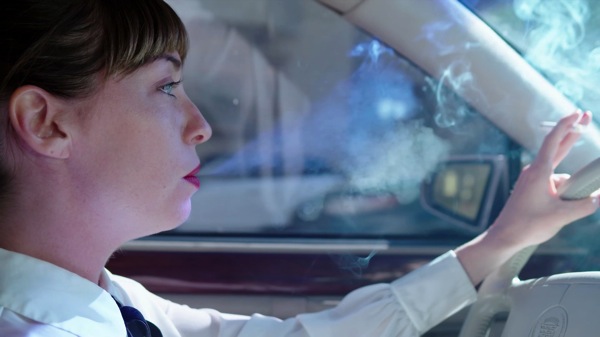
This car sequence was shot entirely with natural light, and it was really surprising to see how much highlight detail we were able to hold outside the windows. We shot this sequence while driving through San Francisco in the early afternoon on a beautiful September day and I saw very few blown-out highlights during the grade.
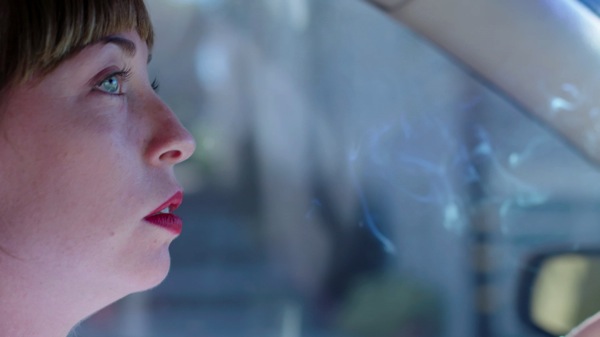
As I shot this sequence without lights I had to plan out how best to take advantage of the light that was available to me. Everything looks better in backlight so I decided we needed to keep the sun on the driver’s side of the car whenever possible. I also wanted to take advantage of light reflecting off buildings on the north and east sides of the street as fill light. To make this possible I asked that we only drive west and north along San Francisco streets: as the sun was setting toward the southwest this meant that we’d always be shooting into shadow and the sun would always be on the opposite side of the car from the camera, while the lit buildings behind the camera became fill lights.
This backlit approach worked particularly well when shooting shots with a lit cigarette as the smoke stood out very nicely from the background. We rolled down the windows between takes to let the smoke out but couldn’t leave them down while shooting as car windows tend to have a green tint to them. Leaving them all up meant that I could pull some green out overall during the grade and bring the image back to normal, but leaving one window down would mean that any light coming into the car without passing through green glass would turn magenta. As I graded this project myself, and as I’m not that great a colorist, I opted to breath in a lot more cigarette smoke than I usually would so as not to deal with the headache of trying to key subtle hues of magenta and grading them back to neutral.
I was really surprised at how little was clipped when shooting out the back window. Here’s the final graded shot:
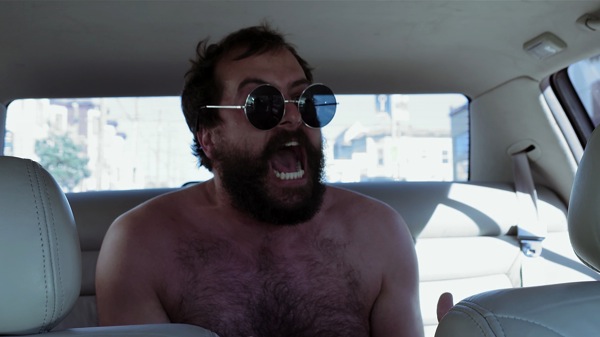
And here’s the S-Log2 original:
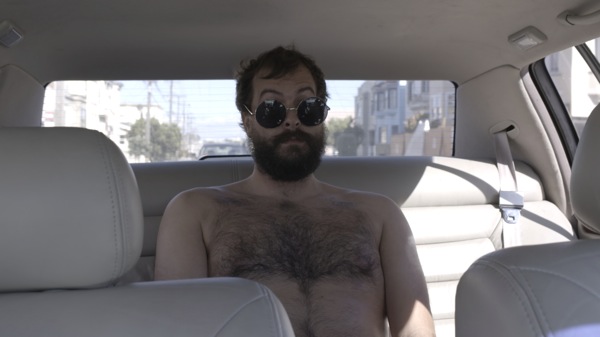
There’s quite a lot of highlight detail out there, which is surprising given that we were shooting from the unlit interior of a car into direct sunlight. It’s especially interesting given that I overexposed nearly every shot in this project by two stops.
Yes, you read that right: I overexposed nearly every shot by two stops.
Here’s the deal: S-Log2, and indeed any log curve, is not meant to be looked at. It’s a storage medium only. You can view it directly but it just looks flat, dark and desaturated. You have to pull the mid-tones apart in the grade, by applying a basic S-curve, before it starts to have any snap at all, and it helps if you bring the footage into the Rec 709 color space to bring back a bit of color saturation. (S-Log2 works best in conjunction with S-Gamut wide gamut color, which looks really desaturated on a Rec 709 HD display.) Without this kind of visual help it’s very, very difficult to know what you’re getting in the field if you’re shooting without a monitor and some sort of corrective LUT box.
The worst part of viewing log footage without a LUT is that the footage tends to look dark. This is not true of LogC, Arri’s log implemention, because they plot middle gray at roughly the same IRE value in both Rec 709 WYSIWYG mode and LogC (38-39%). This means that mid-tones look somewhat accurate even if you’re seeing them in their flattened out log state. Sony and Canon map log middle gray values somewhat lower, at around 32%–about a stop darker than they would appear in WYSIWYG Rec 709–in order to capture more highlight detail. They can do this because log is not meant to be viewed directly, so middle gray can be placed as low as the noise floor will allow. Unlike Arri and LogC, Sony S-Log2 plots black fairly far down the tonal curve so shadows look less milky than they would in LogC.
Here’s an approximation of what I saw through the viewfinder before opening up the stop:
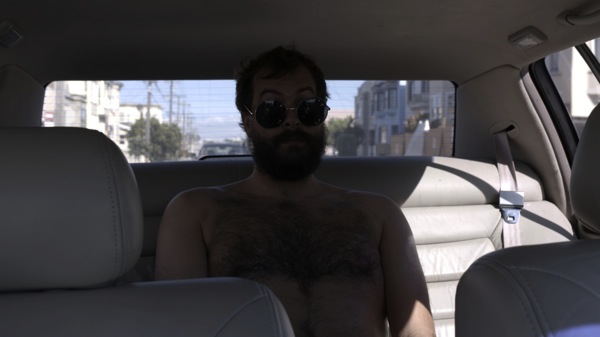
There’s nothing wrong with an image like this—it grades just fine—it’s just not meant to be looked at. And if that’s the case… why would a company expect me to look at it? I’m baffled. I’m also hearing rumors that this will be fixed… soon.
So here I am shooting run-and-gun experimental footage with a camera whose viewfinder always looks dark if I expose S-Log2 correctly. So what do I do? I overexpose it until it looks “right.” This is completely the wrong way to expose log, but it’s the only way to do it at the moment if you’re working without a LUT-corrected monitor. Sony plans to implement in-camera LUTs–known as “MLUTs for S-Log2 soon, but they aren’t here yet. Currently they are only available when shooting raw.
What’s curious is that I should only have to open up a stop to bring middle gray values into line with the Rec 709 WYSIWYG viewfinder, but I found myself constantly opening up two stops. I’ve shot spots in the same style with the Sony F5 and found myself only opening up one stop to make the image look more “normal,” but there’s something different between the F5 and F55 S-Log2 implementations that I haven’t been able to figure out yet.
When shooting S-Log2 with a monitor but without a LUT box I’ve found that opening up a stop or two on the lens, reducing the monitor brightness control — which is really black level — and increasing monitor saturation results in a more contrasty and saturated look that keeps clients happy.
It was an interesting experience to shoot with an HD camera in a mode that captured an amazing amount of detail but didn’t let me see a usable image. We used to do this with film stocks all the time, but film stocks didn’t change much over their life cycles and they stuck around long enough for us to learn how to use them. Now every camera is potentially a dozen, or even a hundred, film stocks in one package, so unless you work with one camera in one mode all the time it’s hard to get a feel for what it will do if you can’t see the final image. That’s why I overexposed the image: I don’t know enough about the F55 to expose it using only my meter so I had to make the image look “right.” I work with too many cameras to know any of them well enough to expose everything by light meter alone.
I did use my light meter regularly to estimate exposures and got into the habit of rating the camera slower just to make the image in the viewfinder or in the onboard LCD look right (Sony’s proprietary on-board LCD monitor for the F5 and F55 is excellent, by the way). Once again, this is COMPLETELY WRONG but it was the only way I could really make this setup work without being able to see some sort of basic Rec 709-corrected image in the viewfinder. That would have given me the confidence to rate the camera at its native 1250 and gain two extra stops of overexposure latitude.
The beach was where we had a chance to play with high speed cinematography. A colleague, New York DP Mark Forman, showed me a trick where he rolled the camera side to side while shooting high speed, and the look has always stuck with me. I decided to try it here, to great effect:
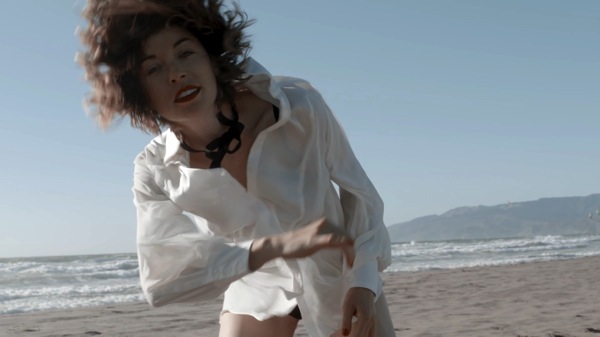
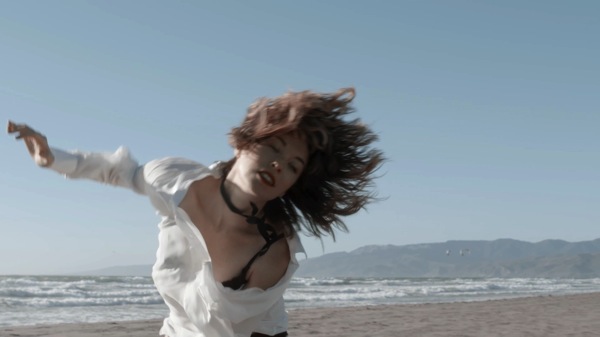
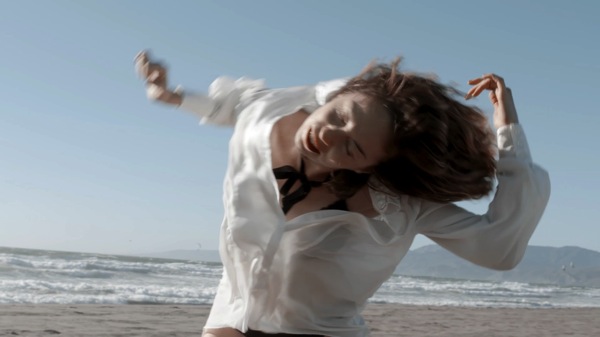
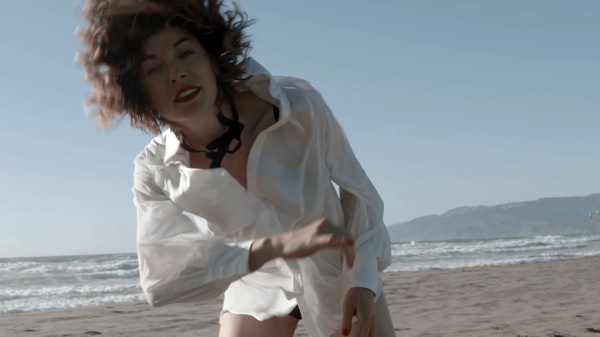
Nearly everything on the beach was shot with a Sony Cine Alta 35mm prime lens. The 35mm focal length is an excellent all-around lens as it’s a little bit wide but not so wide that you wouldn’t want to shoot closeups with it. Even though it looks to be a beautiful sunny day at the beach the wind was gusting at 30-40mph, the temperate was in the 50s and sand and salt spray were blowing through the air sideways. Camera assistant Adam Wilt did his best to keep the salt spray off the lens but we were constantly inundated. After shooting the first dance sequence with a longer lens we took the camera back to our equipment vehicle and put the 35mm lens on there as we didn’t want to risk a lens change in the wind. We didn’t change it again for the rest of the day.
Focus was mostly guesswork. I set focus for where I thought I’d be in relation to the actress and then stopped down to T11. I closed the shutter to 90 degrees to make her movements strobe a little. And, lastly, we rolled at 120fps not only because it was the fastest we could shoot to SxS cards but also because the editor could drop all but every fifth frame and snap the slow motion into real time if they wanted to.
Initially the editor left out some really awesome shots because they just didn’t look that great ungraded. At one point I rotated around the actress to put the sun behind her and a few seconds later stopped down to create a silhouette, but when the editor saw the shot before I stopped down he decided it wasn’t worth using. I managed to convince the director to put the shots back in when I did a rough grade and showed him this:
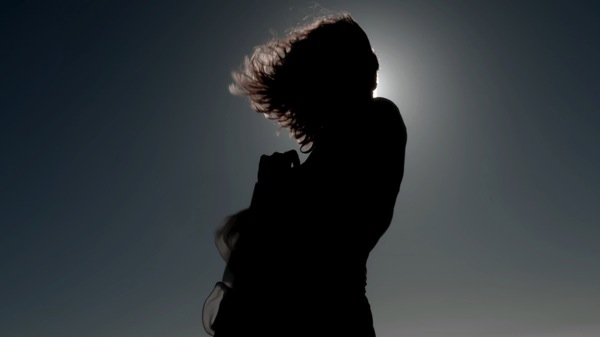
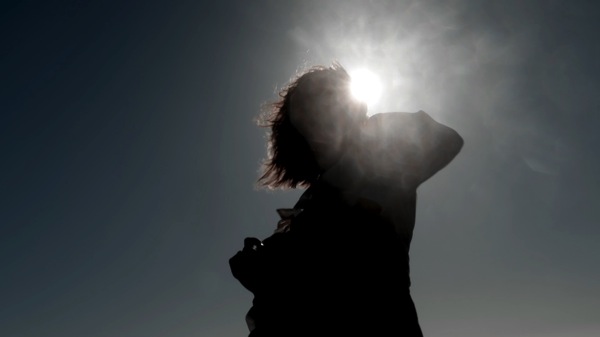
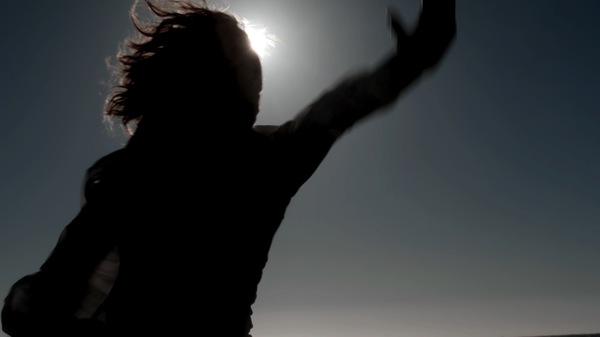
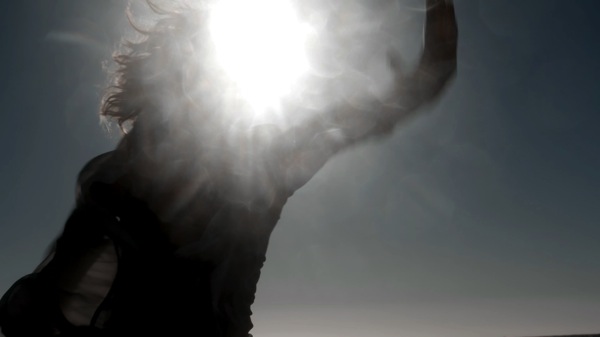
You can see how much crap is on the lens in the shots where the sun is exposed. That’s salt spray accumulating on the front element. It caused a lot of problems in the grade as some shots were more “diffuse” than others and required a bit of sharpening. In this case, though, I thought the spray made the shot look a lot more interesting.
I love the F55, but it’s not finished yet. Once MLUTs are available in-camera for S-Log2 recording I’ll have no problem thinking of it as looking good enough to be Alexa Jr. That’s good for Sony, because Alexa Jr. is right around the corner.
